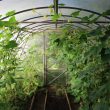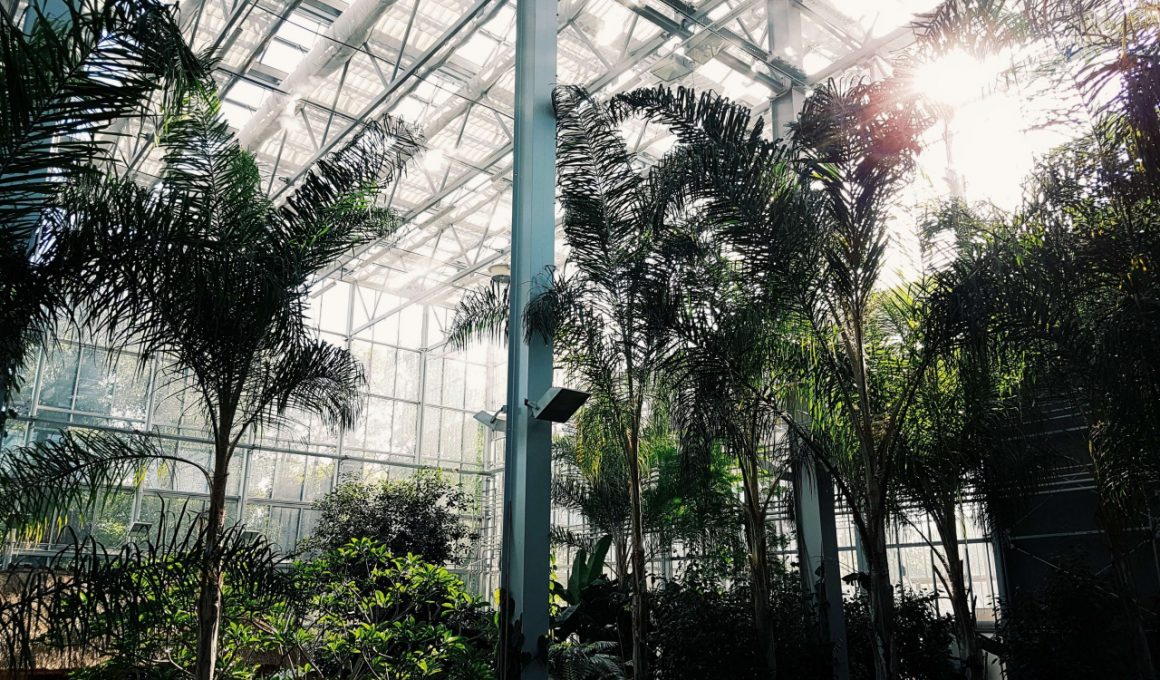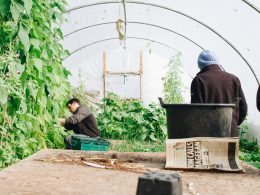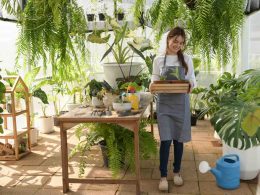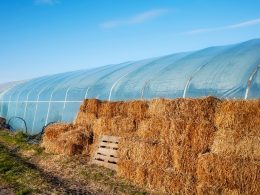Green House Adviser is reader-supported. When you buy through links on our site, we may earn an affiliate commission. Learn more
If you’re here, you’re probably wondering: When were greenhouses invented? Maybe you’re interested in this question because you’re a gardener thinking about investing in a greenhouse. Or maybe, you would simply like to know the history of greenhouses.
Greenhouses have been around for a long time. They are the largest buildings on agricultural farms and provide an environment for the cultivation of plants and crops, typically during the winter months. But when were greenhouses invented? How did they get their start? These questions and others will be addressed in the following paragraphs, so keep reading!
What Is a Greenhouse?
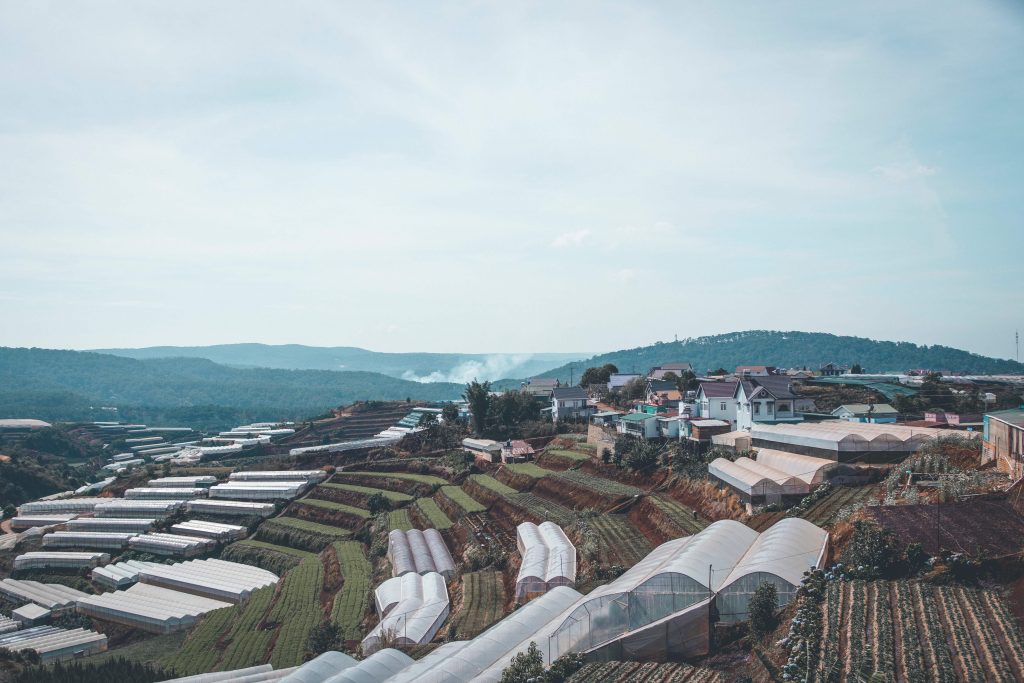
A greenhouse is a structure enclosed by glass or plastic, and it’s used to grow plants in any season. Greenhouses help protect plants from extreme heat, cold, wind, and rain. They can be attached to your house or located in your backyard.
The History of Greenhouses
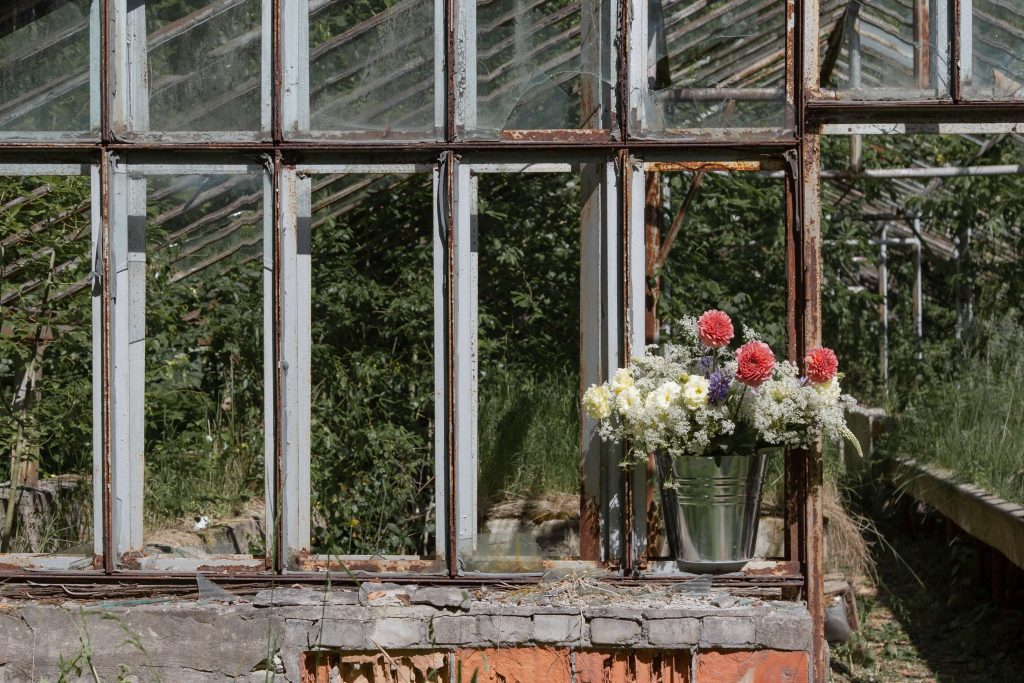
Nowadays, it’s hard to imagine life without greenhouses. They are a great way to grow plants while protecting them from the elements. However, greenhouses have been around for a lot longer than you might think. The history of greenhouses is pretty intriguing and dates back centuries. You can learn more about all of that below.
Greenhouses in Roman times
Growing plants in controlled environments has been practiced since at least Roman times. Emperor Tiberius of Rome “was never without it” when it came to cucumbers (Pliny the Elder 77 C.E. in Bostock and Riley 1855). To have it accessible for his meal every day of the year, the Roman gardeners devised artificial cultivation techniques (akin to the greenhouse system). Cucumbers were sown in wheeled carts placed in the sun every day and then brought inside at night to keep them warm under particular conditions (Pliny the Elder 77 C.E.). Cucumbers were preserved in cucumber homes coated with an oiled cloth called “specularia” or mica sheets.
Medieval developments in Italy and Korea
The development of greenhouses in Italy and Korea is an important chapter in the history of horticulture as the next big breakthroughs in greenhouse history occurred over 1000 years after the Romans invented the first ones. Around the 1300s, the Italians were creating the world’s first botanic gardens to preserve and show the tropical plants and vegetables brought back by early explorers. One of the first botanic gardens was established at the Vatican, even though it is no longer operational. A few decades later, historical references describe the invention of thermal glasshouses that have been used to cultivate citrus fruits throughout the frigid winter months in nations such as Korea.
Renaissance greenhouses
The Renaissance was a period during which European artists, writers, and architects borrowed styles from the past and adapted them to suit the needs of their own time. The same happened with greenhouses. Greenhouses became more common throughout Europe during the Renaissance, especially from the 16th century onward. Greenhouses during this period benefited from good quality glass and metal, which made building easier and more lasting, thanks to technological improvements at the time. At the same time, aristocratic classes in nations such as France, the Netherlands, England, and Italy developed a desire for exotic plants and fruits such as oranges and pineapples.
The birth of the modern greenhouse
Even into the 19th century, governments, universities, and scientific organizations continued to prefer greenhouses, but it was the Industrial Revolution that made greenhouses more affordable for the developing middle class, particularly in England. At this period, the price of making glass shrank considerably, and the significant tax on glass and windows was removed. Due to this, some of the most exquisite greenhouses ever built—like the Palm House at Kew Gardens outside of London—were eventually built. Smaller, self-built greenhouses also started to appear in the gardens of middle-class dwellings.
Greenhouses in the 20th century
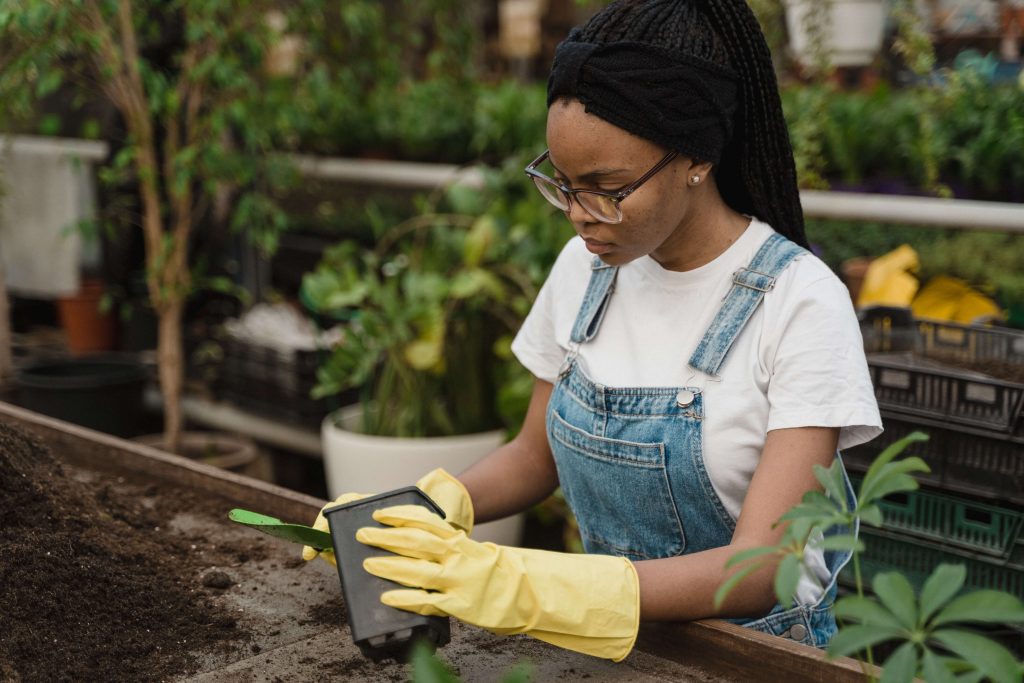
The greenhouse industry had many more fascinating changes in the early and middle 20th century. In terms of construction, aluminum frames began to be used more frequently in greenhouses in place of the iron or steel that had previously been popular; this innovation made greenhouses lighter and better equipped to resist corrosion. One of the oldest instances of this building style is the conservatory at the US Botanic Garden in Washington, DC, created in the 1930s by Lord & Burnham.
Along with new materials, greenhouse growth practices underwent changes during this time as well. The transition from soil-based to hydroponic systems, in which plants are grown without soil and instead receive nutrients from a solution administered straight to their roots, took place in greenhouses, specifically in the early and middle 20th century.
Hydroponic technology, which is based on crop-growing techniques that date back thousands of years, first became an effective way to grow crops in the early 1900s, but it wasn’t until World War II that the practice really took off. To ensure that their troops, stationed in isolated locations all over the world, could generate their own fresh food at this time, Allied forces turned to hydroponics. Military hydroponic greenhouses were constructed all over the world during this time, officially ushering in a new era of hydroponic greenhouses designed for large-scale production.
The Bottom Line
It is not that greenhouses appeared out of nowhere. They arose from the simple need for warmth and an effort to promote growth after a long and harsh winter. Greenhouses have evolved with time, and today they are used all around the world, from personal homes to massive commercial operations. That’s because a greenhouse can be so much more than just a place to warm up: a greenhouse is a place where you can enjoy fresh food year-round, no matter the weather.


